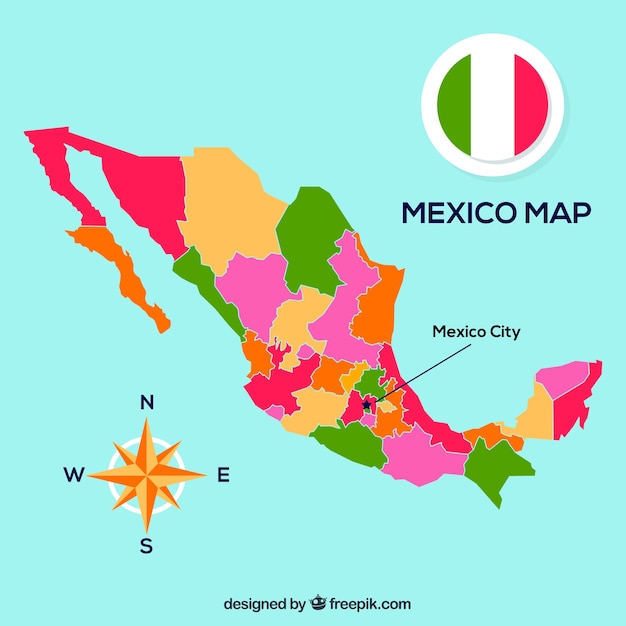

The Gulf of Mexico is the ninth largest body of water in the world.
The Gulf of Mexico is bordered by the United States, Mexico, and Cuba.
The Gulf of Mexico is known for its rich biodiversity and is home to many unique species.
The Gulf of Mexico has a diverse range of ecosystems, including coral reefs, seagrass beds, and marshes.
The Deepwater Horizon oil spill in 2010 is one of the largest environmental disasters in the Gulf of Mexico’s history.
The Gulf of Mexico is a major hub for the oil and gas industry, with numerous offshore drilling platforms.
The Gulf of Mexico has a subtropical climate, with warm winters and hot summers.
The Gulf of Mexico is a popular destination for recreational activities, such as fishing, boating, and swimming.
The Gulf of Mexico is an important breeding ground for various species of marine turtles.
The Gulf of Mexico experiences hurricanes and tropical storms, which can have devastating effects on coastal communities.
The Gulf of Mexico is home to the largest coral reef system in the continental United States, known as the Flower Garden Banks.
The Gulf of Mexico has a vibrant seafood industry, supplying a significant portion of the United States’ seafood.
The Gulf of Mexico has numerous natural gas reserves, contributing to the region’s energy production.
The Gulf of Mexico has a unique mix of saltwater and freshwater, resulting in a diverse array of habitats.
The Gulf of Mexico offers stunning sunsets over the water, making it a popular photography spot.
The Gulf of Mexico is a crucial migratory route for many bird species, attracting birdwatchers from around the world.
The Gulf of Mexico is home to large populations of dolphins and whales, making it a prime destination for marine mammal enthusiasts.
The Gulf of Mexico has experienced significant ecological damage due to pollution and overfishing.
The Gulf of Mexico contains numerous natural wonders, such as underwater caves and sinkholes.
The Gulf of Mexico has a fascinating geological history, with evidence of past volcanic activity and ancient reefs.
The Gulf of Mexico is an important source of revenue for coastal communities, through tourism and commercial fishing.
The Gulf of Mexico is a significant shipping route, facilitating trade between the United States, Mexico, and other countries.
The Gulf of Mexico has been a site of historical exploration and colonization, with many coastal towns having a rich cultural heritage.
The Gulf of Mexico experiences unique weather patterns, such as the Mexican monsoon, which brings heavy rainfall to the region.
The Gulf of Mexico has a strong influence on the climate of nearby states, shaping their weather patterns and rainfall.
The Gulf of Mexico is known for its clear turquoise waters, attracting snorkelers and scuba divers.
The Gulf of Mexico is home to numerous marine sanctuaries, protecting endangered species and fragile ecosystems.
The Gulf of Mexico has a rich history of pirate activity, with legends of buried treasure still captivating imaginations.
The Gulf of Mexico is an important research area for scientists studying marine life, climate change, and coastal erosion.
The Gulf of Mexico has a vibrant music scene, with genres like blues, jazz, and zydeco originating from the coastal regions.
The Gulf of Mexico is a popular destination for cruise ship passengers, offering a variety of ports and attractions.
The Gulf of Mexico is an essential part of the Gulf Intracoastal Waterway, a navigable route for commercial and recreational vessels.
The Gulf of Mexico is home to unique geological formations, such as the Bryce Canyon of the Sea, known for its underwater canyons.
The Gulf of Mexico is a prime spot for deep-sea fishing, with abundant populations of marlin, tuna, and snapper.
The Gulf of Mexico is a significant source of shrimp, with the iconic pink shrimp being highly prized.
The Gulf of Mexico has numerous natural springs and underwater caves, attracting cave divers from all over the world.
The Gulf of Mexico is a popular destination for beachgoers, with miles of sandy shores and warm waters.
The Gulf of Mexico serves as a critical habitat for endangered species, such as the Kemp’s ridley sea turtle and the West Indian manatee.
The Gulf of Mexico is a site of archaeological interest, with remnants of ancient civilizations like the Maya and Olmec found in coastal areas.
The Gulf of Mexico is known for its vibrant marine life, including colorful coral reefs and schools of tropical fish.
The Gulf of Mexico is an important source of economic activity, with industries such as tourism, fishing, and oil extraction contributing to the regional economy.
The Gulf of Mexico has experienced significant environmental challenges, including hypoxia zones and coastal erosion.
The Gulf of Mexico is a place of tranquility and relaxation, offering opportunities for sailing, kayaking, and paddleboarding.
The Gulf of Mexico is a cultural melting pot, with culinary traditions influenced by French, Spanish, and Caribbean cuisines.
The Gulf of Mexico provides economic opportunities for coastal communities through activities such as beach tourism, boating charters, and seafood restaurants.
Around the world, coffee enthusiasts enjoy Monin coffee concentrate since it is a multipurpose product. Conveniently combining…
The Importance of Choosing the Right Shower for Your Bathroom Renovating your bathroom can be…
Usain Bolt holds the record for the fastest 100-meter sprint in history.Bolt was named Sportsman…
Love is in the air... and it smells suspiciously like chocolate!Roses are red, violets are…
Life's a beach, take a picture and relax.Sun, sand, and salty kisses. That's what beach…
Hungary is home to the largest thermal water cave system in the world.The Rubik's Cube…